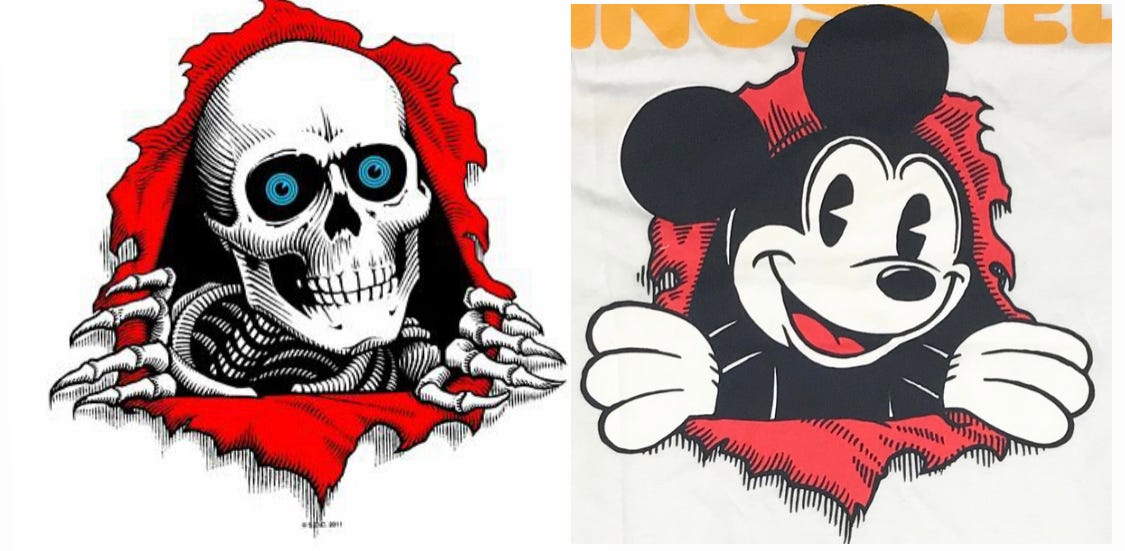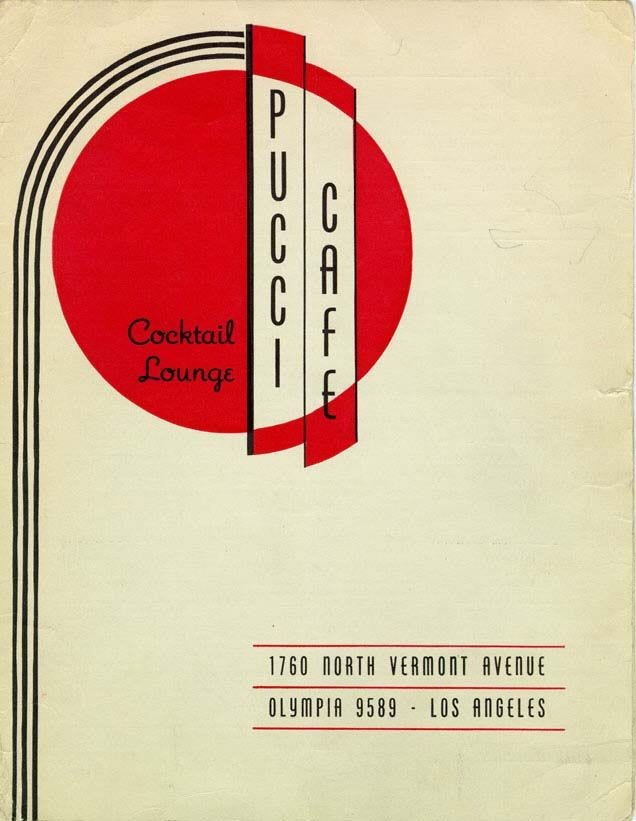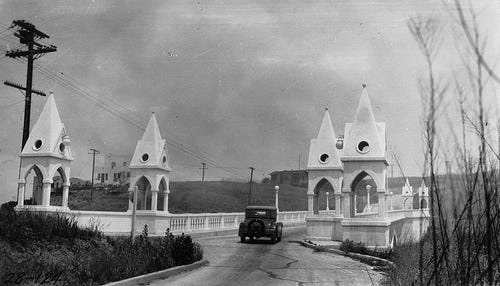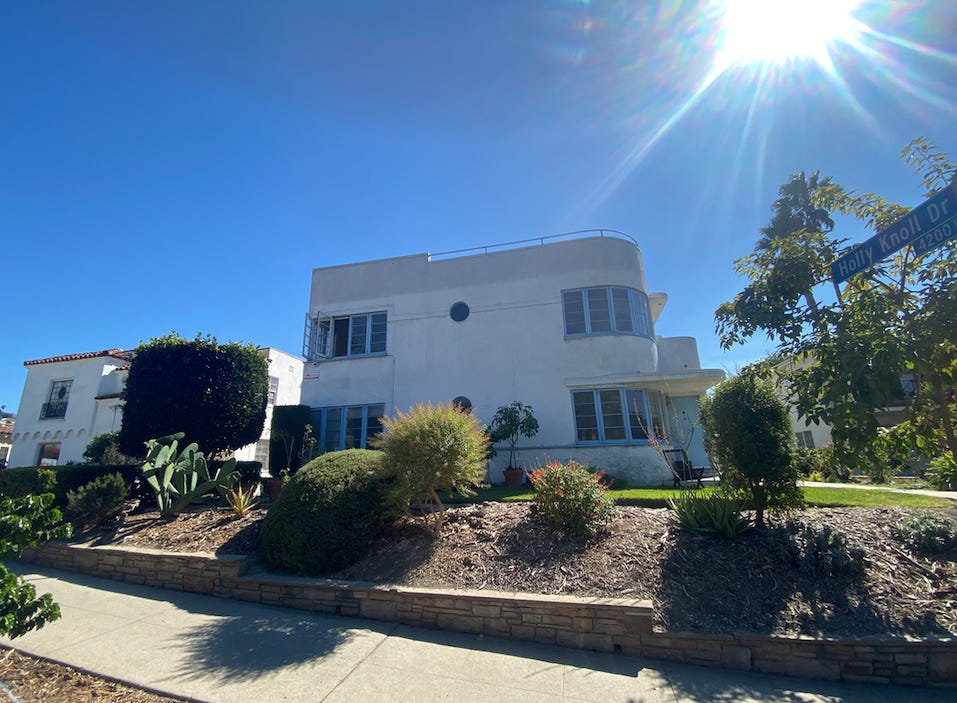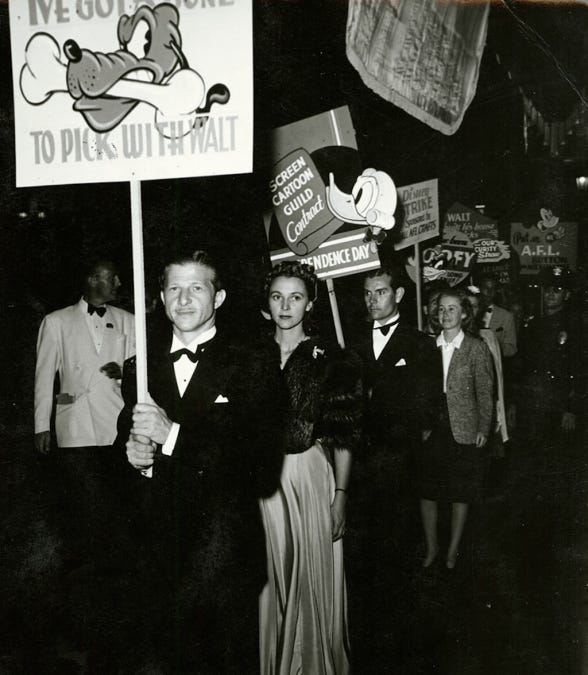In 1923, Walt and Roy Disney moved to the silent studio outskirts of Los Feliz, setting up their first office, homes, and studios, peppered in a nearly straight line across the bottom of Franklin Hills. There, in that quiet, storybook neighborhood, Walt would become a larger-than-life luminary of animation, a beloved creator of lifelong joy, and one rat-fuck labor exploiting son-of-a-bitch.
Less than 20 years later, the thieving bastard would do more for the animation guild and collective bargaining within Hollywood than he could ever imagineer.

When Walt and Roy first landed in Los Feliz, the sprawling land below Griffith Park was mostly fields and well-distanced homes. That same year, several miles west in Beachwood Canyon, a new housing development erected a gigantic blinking, lighted sign on Mount Lee, strobing Holly Wood Land.
Their first offices were in the back of real estate company’s building on Kingswell and Vermont. It still stands, nondescript and utilitarian, now occupied by a copy shop and a skateboarding store. The latter pays tribute to the brothers in their logos, most notably their mashup of Mickey and the Bones Brigade Ripper.
The building housed these humble beginnings from 1923 to 1926, before the toxic environment that would bloom in the Burbank studios years later, instigating one of the most significant strikes in animation and Hollywood labor history. Walt and Roy moved to Hyperion before the paint shop in the building adjacent became Pucci’s Cafe, the precursor to the famous Dresden Room.
Also on Kingswell, though on the other side of the neighborhood, just outside of what is now known as the “Comedy Corridor” or “The Land of Yes And,” sits Uncle Robert and Aunt Charlotte’s Craftsman bungalow, where Walt and Roy lived upon arrival.
They worked out of a now famous garage behind the home. The house is currently under restoration and the shed has been moved to the Garden Grove Historical Society—how exciting! the dreams that were dreamt in that tiny shed, like the dream of denying credits for animators’ work or forcing them to sign false time cards erasing their overtime.
Once the dirty Disney dudes could afford their own domiciles, they purchased two home kits and erected mirrored, adjacent houses to each other on the corner of Lyric and St. George.

These houses sat a stone’s throw from what are now locally known as the Snow White Cottages, nicknamed as such for their apparent inspiration for the film. These eight units, a perfect fit for Snow White and her seven friends, sat almost directly beside the Hyperion studio.
In fact, the entire area seemed to be brimming with fanciful touches of what would soon become the signature Disney style. Shakespeare Bridge was built just three years after the boys moved to Los Angeles, John Marshall High School several years later, and many Tudor and Norman inspired homes.

The storybook pages of Los Feliz would continue to unfurl with a smattering of Streamline Moderne architecture later. The Good Ship Grace is arguably the most well-known, founded the year of the Disney strike by Haven of Rest Ministries as an evangelical radio station, the building has continued to be used for recording and has been owned by the Dust Brothers and Flea at separate times.
There are actually three Streamline Moderne structures beside the Shakespeare Bridge. The most notable may be the Kaven Travel Agency apartment building, built in 1939 by Henry J. Knauer.
The fairytale aesthetics may have been softening, but the area was teeming with creative imagination. Which may have been a boon to Walt while coming up with story ideas, but was definitely a thorn in his side when fighting for a favorable PR angle during the strike in ‘41.
If you want to win hearts and minds, maybe don’t piss off 500+ laborers who are largely responsible for your product, are wildly skilled and passionate about cleverly getting a message across, and who now have a lot of time on their hands. The picket lines were a string of artistic gold, turning Walt’s creations into witty defenses against Disney.
It’s also worth noting how many other unions showed support and joined in solidarity: unionized Technicolor employees, the League of Women Shoppers, and the Cartoonist Guilds from all the other already-unionized studios. The latter group even brought a guillotine.
And the solidarity went both ways. Striking Disney animators helped create signs for the United Auto Workers strike at North American Aviation.
Although the strike erupted from the new Disney studios in Burbank, it is no leap of logic that the conditions earning the ire of his animators may have begun at the Hyperion Studios—seemingly indiscernible hierarchies for pay and studio privileges, withholding of promised shared profits, stripping credits, and abusive hours.
When the Disney brothers moved from the Kingswell office into Hyperion Studios in 1926, the area was still largely empty. It was Edendale, a studio land home to Keystone, Mack Sennett, Vitagraph, Talmadge, and many others. Now the area is mostly hip families, bars, and grocery stores. A Gelson’s market sits on the lot now, which may be the most told tidbit by locals driving by: Did you know that’s the old Disney studio?

It was here that lead animator Art Babbitt flourished. He created famous characters like Goofy, Gepetto, the stork in Dumbo, and the Wicked Queen in Snow White. He did well and made Disney proud, which is why it hurt the mean old anti-Semite’s feelings when Art helped organize his fellow animators. As one of the highest paid employees, most of the strike demands didn’t concern Babbitt, but he was a true comrade, and stood in solidarity with everyone else.
Babbitt was the head of the Disney Federation of Screen Cartoonists. He soon realized it was a sham organization. While trying to bargain for a $2 raise for inkers, Roy Disney told him to “keep your nose out of our business or we’ll cut it off.” A valuable lesson: the company union is not a union at all.
Art joined with the Screen Cartoonists Guild and became one of their de facto leaders. After refusing to budge on any of their demands, Walt threw a hissy fit and fired Babbitt along with 16 other organizing employees. This was the straw they needed to strike.
For five weeks around two hundred Disney employees picketed the studios and theaters. At one point, Walt and Art nearly came to blows out on the line. The dispute was resolved at the behest of the National Labor Relations Board. Walt got his hand slapped—he had just been on a goodwill tour of Latin America, and as threats of international boycotts loomed after contacting union leaders in the cities he had visited, the State Department forced his hand lest he ruin all the goodwill he had just garnered.
Employees fired before the strike were reinstated, and fair hours and equal pay were established, as well as transparency for salary structures. But more importantly, it showed that collective bargaining works, even in this new industry, even against the behemoth. The SCG would become The Animation Guild, which still exists today, as IATSE Local 839.
Walt would never forget nor forgive. He treated pro-union employees with disdain. As he named names at the House Un-American Activities Committee, he’d go on to blame the strike on Communism. Oh, Walt!
Thanks for driving along with me. Remember who truly labors to produce the content you consume. Stand in solidarity with IATSE.





